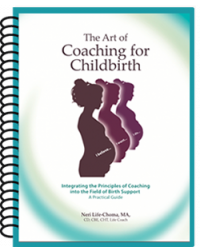The Misleading Concept of ‘Natural Birth’; Let’s Talk About a Healthy Vaginal Birth
The dichotomy of Natural Birth vs. Medicalized Birth had been established in the discourse about birth for the past 30 years and was accepted by both birth professionals and moms. The most obvious and urging question expectant woman is concerned with is whether or not she will take epidural or will try for a ‘Natural Birth’, and in accordance with what she feels inclined to, she will then educate herself and prepare for her birth. She will decide on a childbirth education class and make decisions regarding her caregivers and support group for the birth based on her decision for or against taking epidural. A woman who gave birth vaginally will almost always be asked whether or not she took epidural, or in other words “did you have a natural birth’? This situation is reflected also in birth stories we read online; where we can always find statements in this spirit: “I decided not to take epidural and try for natural birth…and here is what has happened…or “So I decided it was time for my epidural…”. What I find even more concerning, is the shower of praises and cheers that the mother who went ‘naturally’ will perceive, vs. the mother who helped herself cope with an epidural.
I think that that the concept of Natural Birth is so misleading that while preparing for this experience, a woman might find herself giving birth in a way that cannot be farther away than what nature planned for women- a rather medicalized birth. ‘Natural Birth’ is a proposition which describes the conceptual event of some sort of birth that the speaker or listener have in mind. But what type of birth is it? What’s on our mind when we think ‘Natural Birth’? Which pictures come to mind? Which words are associated with it? Which scenarios do we envision and are they really ‘Natural’ for the women we know and support?
I argue that for modern women, there is nothing natural in the process of giving birth and therefore the concept ‘natural birth’ by itself presents women with a dilemma: Giving birth is part of our nature, this is how we procreate, and yet as an occurrence in the life of modern western women, there is nothing ‘natural’ about childbirth.
To support my argument, I checked the dictionary for the definition of ‘natural’, and found the following definition:
nat·u·ral Natural, adjective 1. Existing in or caused by nature; not made or caused by humankind. 2. Or in agreement with the character or makeup of, or circumstances surrounding, someone or something. So now let’s take the propositions of ‘Natural birth’ and read these two definitions with it: Natural birth is: 1. Natural birth is caused by nature, not made or caused by humankind. 2. Natural birth is in agreement with the character or circumstances surrounding expectant moms.
My understanding is that when we oppose ‘Natural Birth’ to ‘Medicalized Birth’, we probably mean to say or imply that this kind of birth occurs and unfolds with no humankind intervention. Well, firstly we need to recognize that this concept tells us what Natural Birth is not, and not what it is. Secondly, I want to point out the misleading implication of this definition- that when we think about something that happens naturally, with no humankind intervention, the connotations that come to mind is of something ‘simple’ or ‘effortless’, which are not at all true when it comes to giving birth. Let’s take a look at the second definition and see how it resonates with us: “Natural Birth is in agreement with the character or circumstances surrounding expectant moms”. Really? Would you agree that in terms of ‘the character of life circumstances surrounding women’ nowadays, nothing about birth is natural for the modern western woman? Do you feel the tension? There is also a conflict between the two optional meanings of the concept ‘natural ‘. I think that healthy vaginal birth, which we refer to as ‘natural birth’, has become so rare because of the dilemma that the word ‘natural’ presents. Here is the dilemma of the modern in regards to childbirth:
“It is in my nature to give birth, yet there is nothing about birth that is natural for me”
Here are some of the reasons why childbirth can’t be or feel natural for us:
- Birth is unpredictable and impossible to plan for. (How many of you already planned their summer vacation? Christmas vacation?)
- Birth requires us to agree to be in pain, and we live in a culture that is obsessed with alleviating pain. We also lost all our coping pain techniques and skills while being born in this culture.
- Healthy birth is a process that lasts an average of 18 hours for first-time moms, and we live in a fast pace culture; we use instant coffee and instant pudding and order food in drive through…We like our results fast! In movies and TV sitcoms birth takes five minutes max.
- Being a long process, birth demands physical and emotional performance, it demands strength and stamina which the modern woman who drives her car, uses elevators, sits in a perfectly air-conditioned office, uses washing machines and dishwashers, and does not squat down the river every day, absolutely lost.
- Our cultural inhibitions, which are the cultural circumstances surrounding expectant moms, are in conflict with our primal and intuitive response to birth. The progress of labor depends on the release of hormones like Oxytocin and endorphin, that are being released by the part of our brain that is called ‘primitive brain’. The primitive brain activates primitive and uncontrolled reactions and behavior like moaning and groaning, crying and screaming, throwing up, the spontaneous motion of the body like spiraling, and other types of behavior that are not considered to be attractive or feminine, and therefore are in conflict with our cultural inhibitions.
To summarize my argument, talking about natural birth is misleading. In a subconscious matter, which women are unaware of, thinking about ‘natural birth’ lead women to either think about something as natural as a sneeze or a yawn, something that happens spontaneously with no investment or effort and therefore needs no preparation or intentional engagement. Ironically, expectant mothers must have a thorough and deep preparation in order to give birth spontaneously, in a healthy vaginal way. For the modern woman, giving birth in the way nature planned for her is quite a performance. It requires her to perform physically, emotionally and mentally in a way that is much different from her everyday life circumstances. And just like no one says natural marathon or natural success, nor should we talk about natural birth.
I



